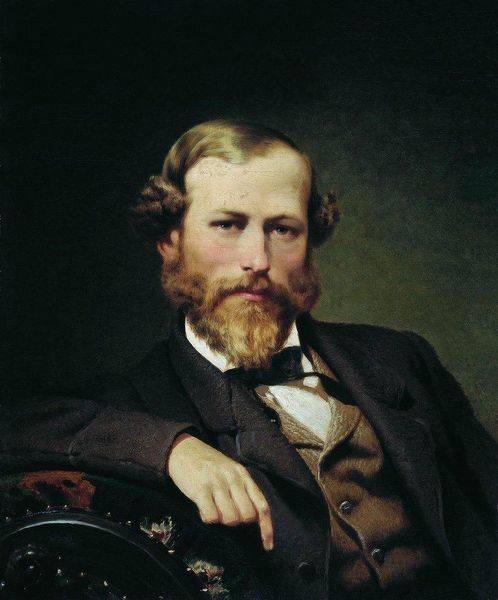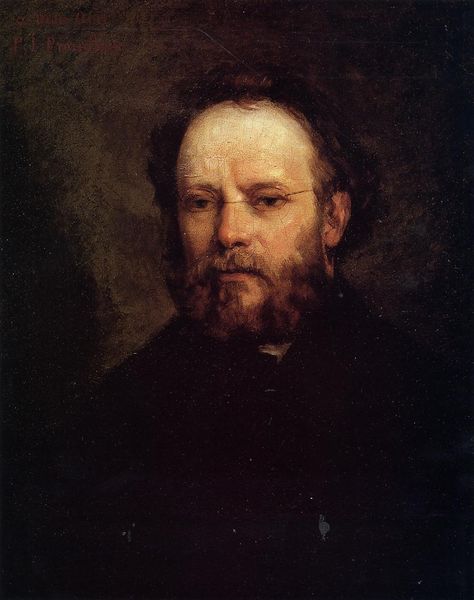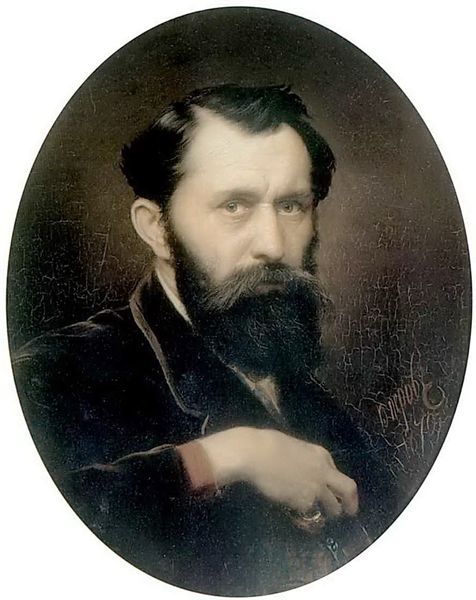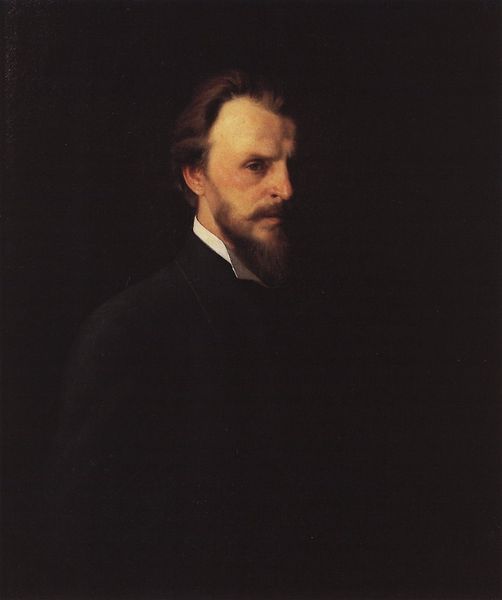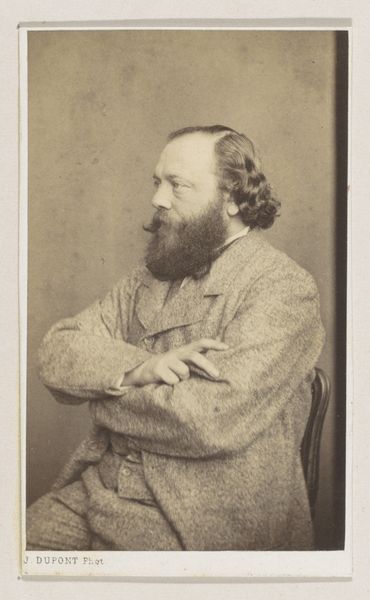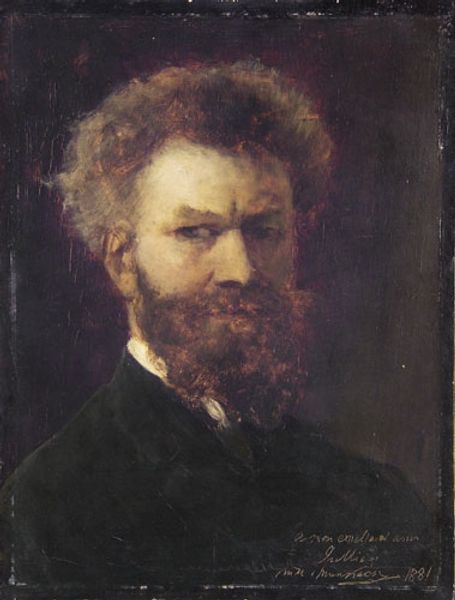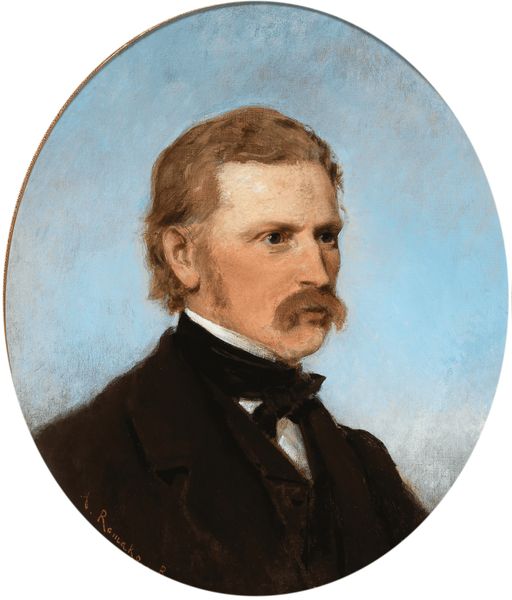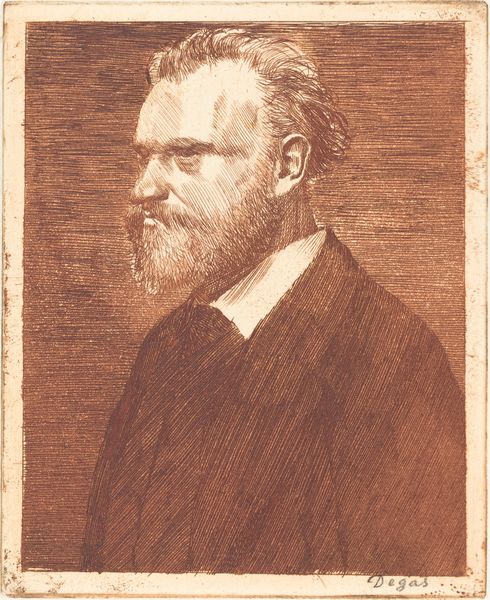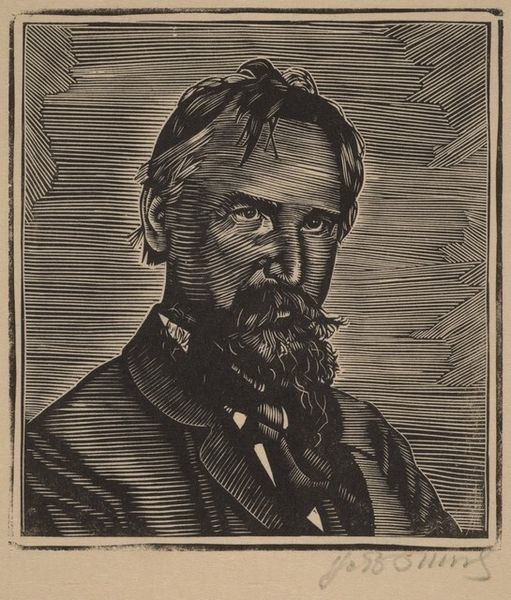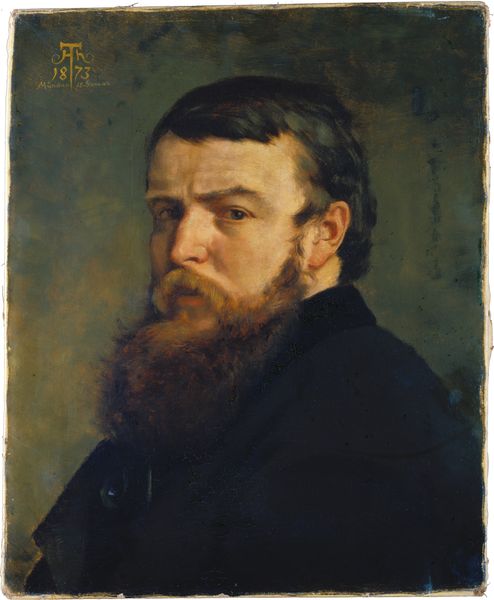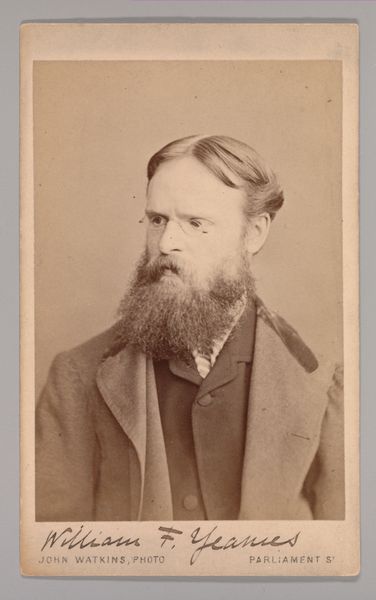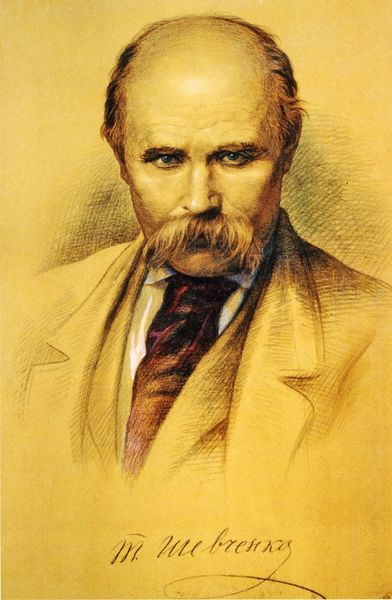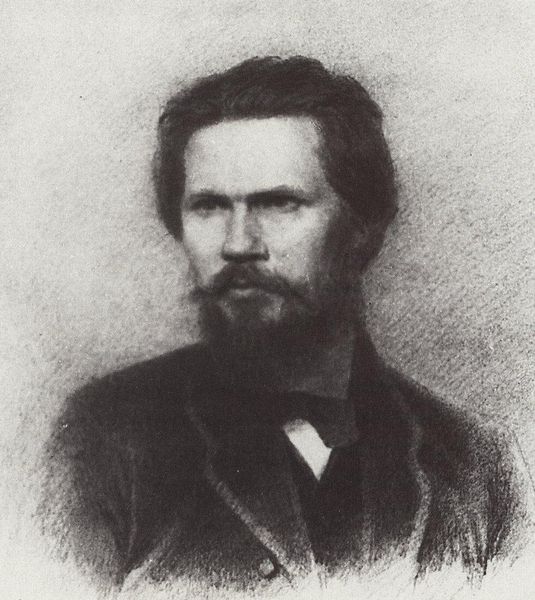
Dimensions: 83.5 x 68.8 cm
Copyright: Public domain
Editor: Here we have Vasily Perov's "Portrait of Nikolai Lanin" from 1869, created with oil paint. It's immediately striking—quite dark and somber. What can you tell me about it? Curator: This portrait provides insight into 19th-century Russian society by examining the production of portraits as a commodity for a rising middle class. Perov’s materials, his choice of oil paint and canvas, reflect the era’s available resources and the economic realities that shaped artistic creation. Notice the texture; the visible brushstrokes and the layering of paint evidence the physical labor involved. What do you make of this labor? Editor: The fact that it's a portrait, not a landscape or genre scene, makes me think about status. Portraits were often commissioned, right? So someone was paying for this specific image. Curator: Precisely. And think about the subject, Nikolai Lanin. Was he aristocracy, a merchant, an intellectual? Consider what the very act of commissioning this portrait says about his aspirations and the artist's role in fulfilling them. Furthermore, let's consider the pigment; was it locally sourced or imported? That also provides clues about the economic ties and cultural exchange of the time. Editor: That's a perspective I hadn't considered before. It’s fascinating how the choices of materials and the process can speak volumes about the subject, the artist, and even the economic backdrop. Curator: Indeed. Examining the artwork through this lens makes us question traditional boundaries between "high art" and the craftsmanship needed to bring these images to life. Considering the socio-economic implications deepens our engagement. Editor: Absolutely! Thanks for illuminating how considering materials and making can unlock a whole new way to look at a portrait.
Comments
No comments
Be the first to comment and join the conversation on the ultimate creative platform.
